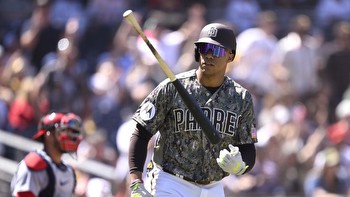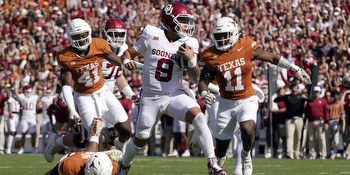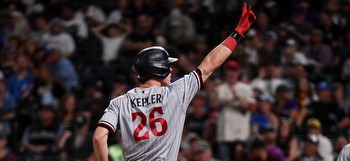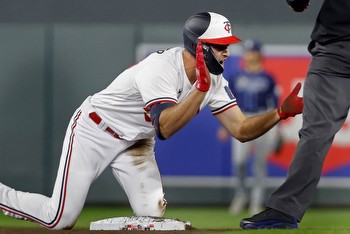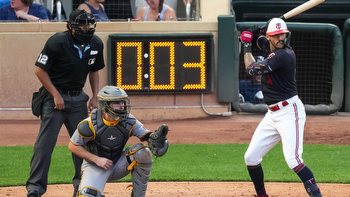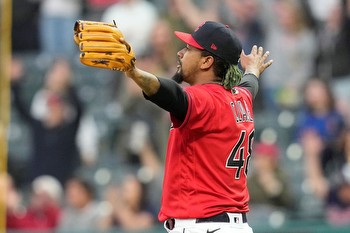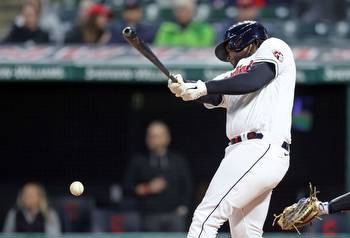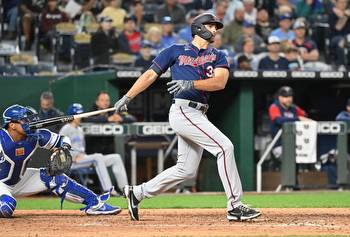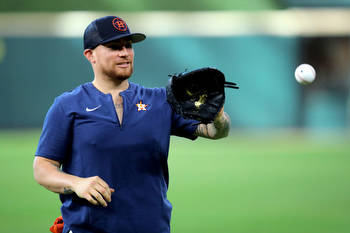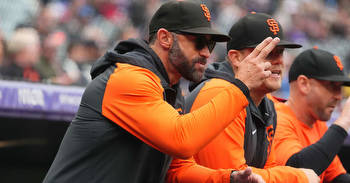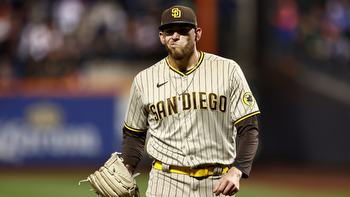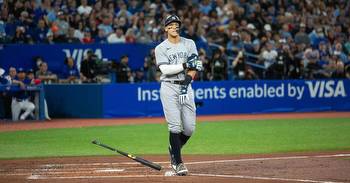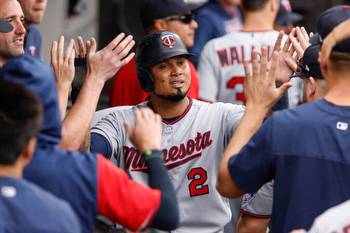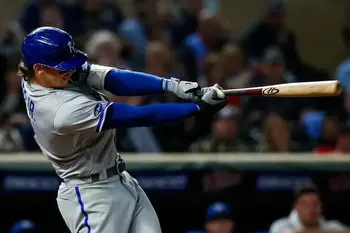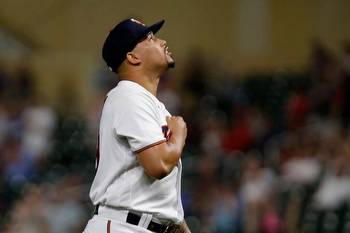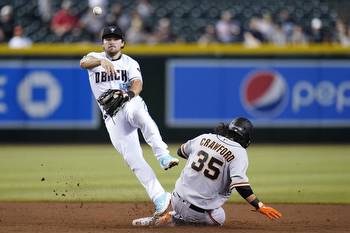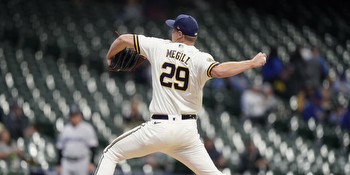Examining the Twins’ Extra-Innings Strategy

Last week we learned MLB’s Joint Competition Committee had adopted additional rule changes to be implemented in 2023. Most notably, the 11-member panel of six team representatives, four player representatives, and one umpire representative voted unanimously to make permanent the controversial rule that places a free runner on second base to begin any regular season extra frame.
Though many fans deeply dislike what is often derisively called “Manfredball,” the format has been effective in limiting the number of marathon games. There have been only two games that have persisted beyond 13 innings since the rule was established in 2020 (including one by the Twins and Guardians last season!), compared to 42 such instances in 2018 and 2019.
The average team has played about 14 extra-innings contests per full season in the past five years, per FanGraphs’ Jay Jaffe. Before the rule change, they averaged about four games per season that lasted more than 11 innings. Since the rule was implemented, they’ve averaged about one such game per season, and the total wear and tear savings provided by the new rule is about 12 innings per team per season.
Despite the realities of this format being a solution to something that is not a significant problem — almost 98% of extra-inning games before the rule changed resolved naturally within 11 innings — it’s proven to be the rare policy issue that owners, front offices, players, and umpires can all agree on.
If we are going to be stuck with these extra inning rules, it’s worth understanding the proper ways to play within them. Today, let’s spend some time digging into what the numbers say are the optimal strategies for managing extra innings, particularly with respect to bunting the zombie runner over to third base to start an inning, and then use those findings to assess how the Twins have played extra-innings over the past three seasons.
How to Play Extra Innings by the Numbers
Like so many other questions about the optimal way to approach something in baseball, Ben Clemens at FanGraphs and Mike Petriello with MLB.com have us covered here. They’ve both gone in depth about proper strategy within this extra innings rule set. Thankfully, they also came to similar conclusions about the optimal ways to approach it. I encourage you to read both pieces because they are excellent — Clemens walks through the math and Petriello illustrates how the rules played out in the minor leagues where it has been in place since 2018 — and I’ll summarize the major conclusions here. I’ll caveat that these should be considered more as general guidelines than absolutes. In baseball, there are always other variables to consider.
Visiting Team
We can take the decisions in chronological order. The visiting team will always come to bat in a tie game in the top of any extra inning frame and will start with a man on second base and no outs.
The question is, should they sacrifice bunt to move that runner to third base with one out or let their batters hit away?
We can use run expectancy and odds of scoring data, which Tom Tango recently updated for 2012-2022, to determine the proper play.
We can see from the top table that a runner on second base and no out situation averages 1.134 runs and from the center table that it comes with a 61.2% chance of scoring.
A successful bunt to move the runner to third base with one out increases the chances of scoring to 66.6% but decreases the overall run expectancy to 0.971.
The visiting team’s strategy should be informed by the run expectations of the home team and this data should tell the visiting team that playing for one run (i.e., sacrificing to move the free runner) is a sub-optimal play.
Because the home team is, on average, going to score more than a single run in the bottom half, the proper strategy for the visiting team is to hit away and try to score multiple runs.
Petriello used Tango’s work to show the visiting team bunting to lead off the top half of the inning reduced their win expectancy from 50% to 48%. That’s not a major change, but any marginal decrease is meaningful in these critical situations.
Home Team Trailing
What the home team should do with their turn at bat depends primarily on the score. If the visiting team pushed across any runs in the top half, the proper play for the home team is to play it straight and hit away. That is obvious if the deficit is multiple runs, but might be a little less clear-cut when it is a single run.
Being down a single run entering the bottom half is a scenario with a plausible case to be made for bunting. The math is the same as the visitor section above. That means, on average, the most likely outcome of this approach is another inning, not a win.
Petriello showed that this play reduces the home team’s win expectancy from 45% to 42%, largely because it gives the opponents another chance at a multi-run inning.
There are probably scant few situations where a team has the available pitching depth to make playing for another inning the most desirable approach. Because the average run expectancy is 1.134 to begin the bottom half, the best option, even when down one run is to play it straight and hit. If you’re trailing in extra innings, hitting away is the correct play.
Home Team, Tied
Finally, we have the scenario where the game remains tied entering the bottom half. In this case, a single run wins the game, so the optimal strategy is to maximize the chances of scoring a run. This is the only case where a sacrifice bunt to lead off the inning and move the free runner to third base with one out often can make sense, like the numbers in the previous section illustrated. A successful bunt by the home team in a tie game increased win expectancy from 81% to 83%, per Petriello and Tango.
It’s not a hard and fast rule, though, because who the batter is matters. You don’t want to bunt your best hitters with a runner in scoring position and a chance to end the game. You also want to have confidence the batter is capable of getting the bunt down. We know that bunting skill is diminishing across the game (to say nothing of the inherent challenge of bunting against late-game relievers throwing near triple digits) and Clemens found that about 15% of bunt attempts fail either by failing to move the runner or by getting the runner tagged out on the bases. A failed bunt attempt for an out can be disastrous. It reduces the chances of scoring a run to 40.2% if the bunter is out, or to 26.7% if the runner is out.
At home and tied is also the situation where it makes sense to get extra aggressive on the bases, as I described in our baserunning analytics fundamentals article. When one run is all you need, you should be willing to take more risks. Clemens estimated that the break-even rate for successfully stealing third base in these situations is about 58%. Pending who the runner is, an attempt at stealing third in lieu of a sacrifice bunt could also be a good play, or as a fallback option with one out (say, if a bunt attempt failed).
Clearly, there are a lot of elements at play for the home team in a tied extra-inning game. I thought Petriello summed up this rule of thumb well when he wrote, “... if you’re the home team, and if it’s tied, and if your hitter is not a strong hitter — you’re never, ever bunting with Mike Trout or Christian Yelich, obviously — and if you think he’s likely to lay down a good bunt, then maybe consider it. Otherwise? Nah.”
So, we can summarize the rules of thumb covered above with the following table:
The Twins and Extra Innings 2020-2022
With those general principles established, we can use them to analyze the Twins’ approach in extra innings. Since the beginning of the 2020 season, the Twins have participated in 43 extra-inning games. They’ve gone 19-23 in those contents, including 11-11 at home and 8-12 as the visiting club. Thanks to Baseball Reference, I was able to pull together a data set of those games and analyze how the Twins played each inning from an offensive standpoint.
In total, there were 58 extra innings played across those 43 games, giving Rocco Baldelli 58 opportunities to make choices about offensive strategy. Now, many of these did not come with difficult decisions. When the Twins were the visiting team or trailing by multiple runs as the home team, the only viable strategy was to hit away. That was the situation in 35 of these innings and Baldelli played them all normally, as he should have.
Of the remaining 23, eight saw the Twins down by a single run in the bottom half. In each case, the Twins batters hit away, correctly per the numbers discussed above.
In the remaining 15, the Twins were batting as the home team in a tied game, which theoretically could mean fifteen sacrifice bunting situations. In reality, Minnesota bunted only twice – once was a failed Andrelton Simmons attempt in 2021, and once successfully by Nick Gordon last season.
We can bin those 15 chances into three categories – obvious bunt, obvious hit away, and those in the questionable middle. Let’s examine:
Twins Extra Innings Strategy, Home Team, Tied 2020-2022
My assessment found that sacrifice bunting was the proper call in 7 of the 15 situations. Running through those quickly: Eddie Rosario against Josh Hader was a major platoon disadvantage for the Twins. Light-hitting Ehire Adrianza should have been a near-automatic bunt candidate, and the same can be said for Simmons and Jake Cave, almost regardless of who the pitcher was in these situations. Gordon was less clear-cut, but I’d still lean toward having him bunt.
I had five instances that were questionable. Alex Avila was a strong hitter against right-handed pitching and was likely to pull something against David Phelps, making swinging away a decent call. Jorge Polanco swinging away against a right-hander with two rookies to follow makes sense. Alex Kirilloff against Derek Holland was a platoon disadvantage, which would suggest bunting. But how confident were the Twins that Kirilloff, a prospect developed as a middle-of-the-order hitter, could get a bunt down? The same goes for Miguel Sanó, who was also facing a left-hander. Swinging away was probably the best option in both cases. Byron Buxton is usually someone you’d want to hit in these situations, but his bunting ability and speed in front of Carlos Correa and Max Kepler made bunting a viable choice.
Perhaps it is not surprising that the three situations I binned as obvious swing-away opportunities involved Luis Arráez at the plate against a right-hander. When a single can end the game, there’s almost no one better to have at the plate, and Rocco correctly let him hit.
Summing It Up
In his 58 extra innings management chances over the past three seasons, Baldelli has probably made the right strategic choice 53 times. That’s just above 90%. In the remaining five, he probably should have had weak or disadvantaged hitters bunt instead of swing away. A common thread of those decisions, aside from Rosario against Hader, was the Twins hitter had the platoon advantage.
It’s probably not surprising that a team that believes strongly in analytics would skew towards swinging away in questionable situations, especially with the platoon advantage. After all, the Twins have executed the second-fewest sacrifice bunts (19) over the past three seasons. By and large, the math supports that general approach. This analysis suggests they might benefit marginally from deploying more bunts with their lesser hitters in specific extra-innings situations. But, given all the variables involved and the only marginal gains to be had by bunting discussed above, unless it’s clear-cut to bunt, managers should probably err on the side of hitting away.

